| 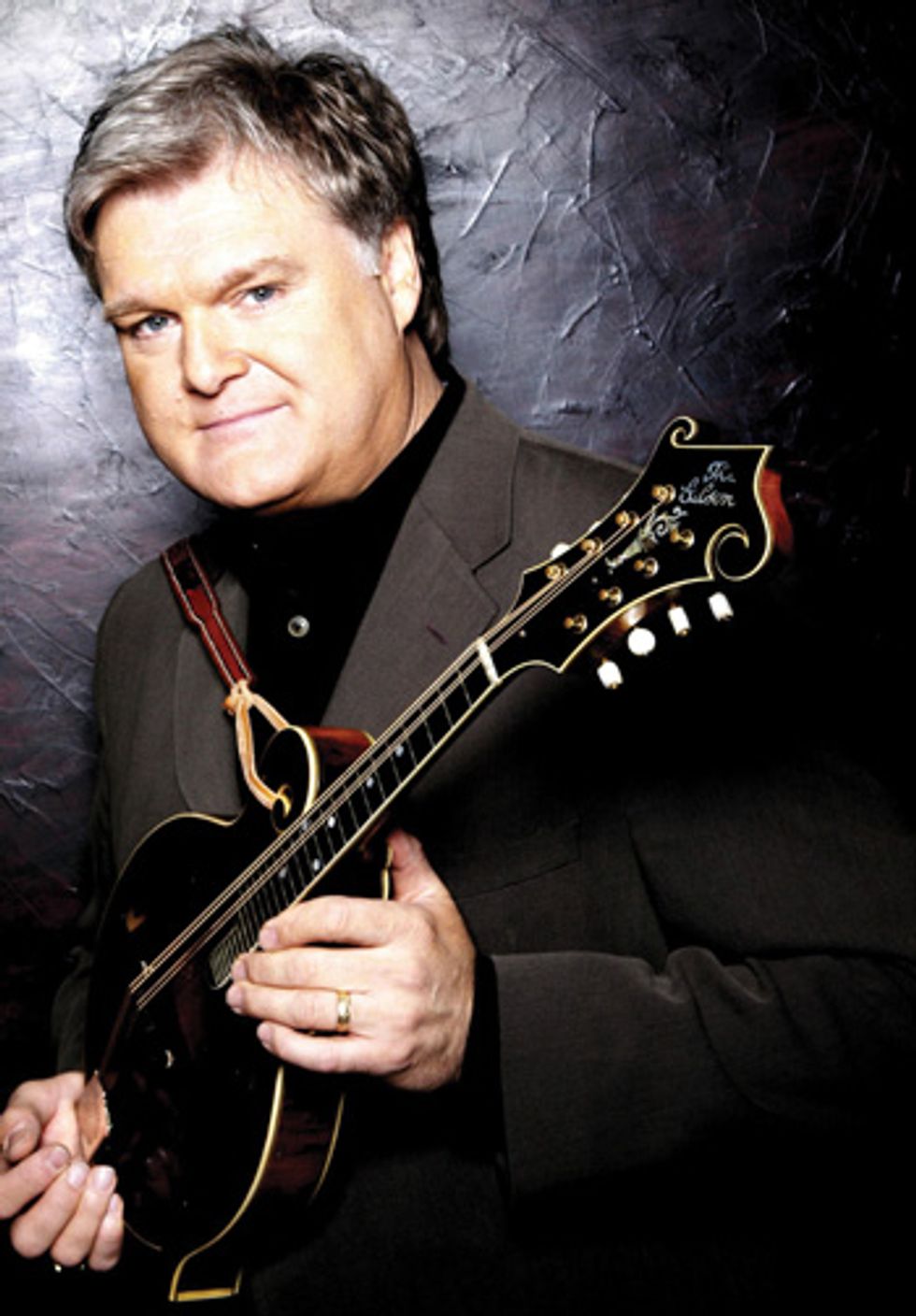 |
You’d expect a guy with such legendary chops to have killer axes, and Skaggs is a connoisseur. He told me that in his studio currently he’s got fifteen amazing guitars strewn around that he’s using on a new solo project (Songs My Father Loved, Skaggs Family Records, release date to be determined). Recently he’s been involved in the design and production of some of the most amazing guitars ever made: the Bourgeois Ricky Skaggs Limited Edition and the new acoustics from PRS.
Eager to talk about pickin’, guitars and gear, Skaggs was a peach to interview.
You and I went to the same kind of bootcamp/ university, learning to play music by playing music, sitting in a circle with a bunch of other pickers and learning from them, imitating what they do. How did all that happen for you?
Well, I was singing before I was playing, listening to my mother. She was a great singer, a great old mountain voice, almost like Hazel Dickens on steroids, so pure and so mountain. Of course my dad was a singer, too, so I was singing with them a couple years before I started playing, in church when I was three years old. I remember my mother carrying me up and putting me on the pulpit with my little ol’ legs danglin’ down, and I would sing harmony with her and dad. So my dad bought me a mandolin when I was five, but it really freaked him out—he bought me a mandolin and he had to go back to work, and then he got snowed in in Ohio for two weeks. When he came back home after two weeks, I was singing and playing and changing chords at the same time, and he really hadn’t shown me how to change chords on the mandolin. He showed me G, C and D, that was all he knew on the mandolin. I just had a gift to be able to hear that it needed to follow wherever the singin’ was gonna go.
So, I’ve been exposed to that music all my life, and there’s nothing, nothing nothing that can take the place of exposure. All the training, all the sight-reading—I don’t read music. I can read a chord chart a little bit, but I don’t read music and I wish I did. I really do think that it could be a wonderful blessing to me if I could.
But, there’s nothing to take the place of exposure… sitting around in a circle, and when it’s your time to play you play something, and you learn to honor and don’t sit there and play solos all night long. You learn to play rhythm, too, while somebody else is soloing. Playing in front of people causes other people to encourage you and build you up, other than your dad and mom. When you hear encouragement from another musician, a musician that you admire—like when Bill Monroe did what he did for me when I was six years old, or Earl Scruggs hearing me at age seven backstage at the Grand Ole Opry and then inviting me down for an audition for their television show—those kinds of things… there’s nothing that can take the place of that kind of environment to grow up around, a community of musicians.
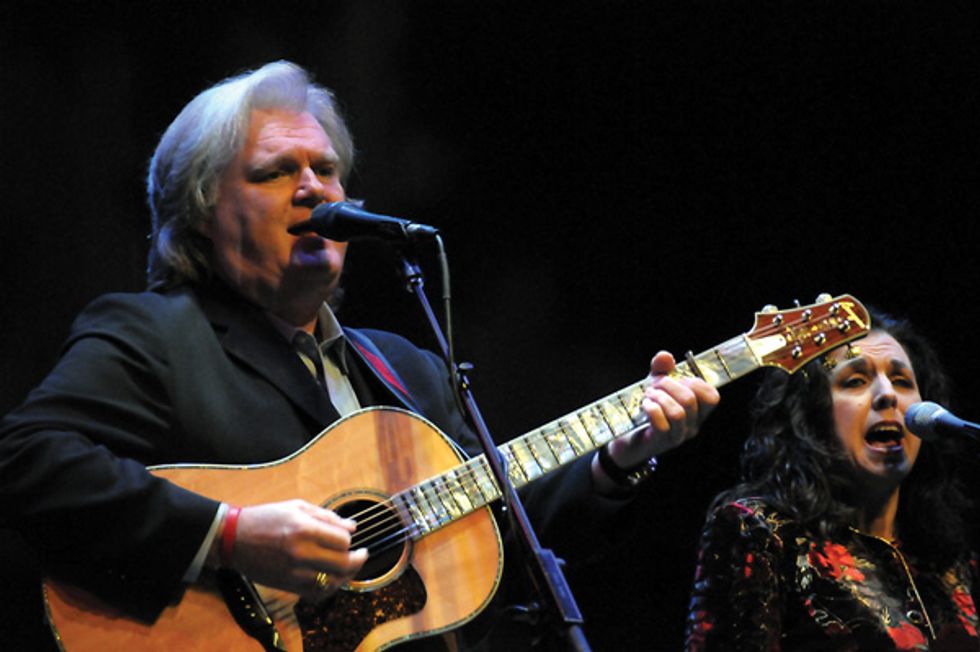
I sweat a lot at home practicing! [Laughs]
I doubt that very much! Your mandolin tone is chimey, it has that church bell vibe, but your Tele sound was so soft and buttery—how did you develop that tone?
Well, I really wasn’t even around electric guitar players. There was a friend of mine who had a Silvertone guitar with a Bigsby tailpiece on it, and I would borrow that guitar and bring it to my house and play Ventures songs on it. I had very, very limited experience with electric instruments back in my early childhood. But when I started working with Emmylou [Harris], Albert Lee was in the band, and of course James Burton had recorded a lot of her stuff and had been in her band before that. So when I started travelling with Emmylou, I was really getting to watch Albert a lot. His tone is in his hands, though—he could play through the smallest Princeton, or he could play through a Fender Dual Reverb and it would sound the same. His tone is just in his right hand, he’s got great sounding hands, and so does James. Amps work for them, but it’s really all in the hands.
And that’s really funny, because I asked Mr. Monroe one time why his mandolin sounded so good and he stuck his hands out and said, “Ah, these hands.” [Laughs] But when I started my own band, I hired a great guitar player name of Ray Flacke. I had met Ray over in England when I was with Emmylou. He was a friend of Albert’s, and he was playing an old Lab Series. I think it had one 15 in it, the L9 I believe— it had this little compression knob. When he left the band we needed a guitar player, and I wanted to hire somebody. I couldn’t hire Albert Lee because he was working with Clapton, and I couldn’t afford James Burton. We had two weeks worth of touring to do up in Canada, and so my wife Sharon said, “Ricky, I’ve heard you play electric guitar. I know you can do this.”
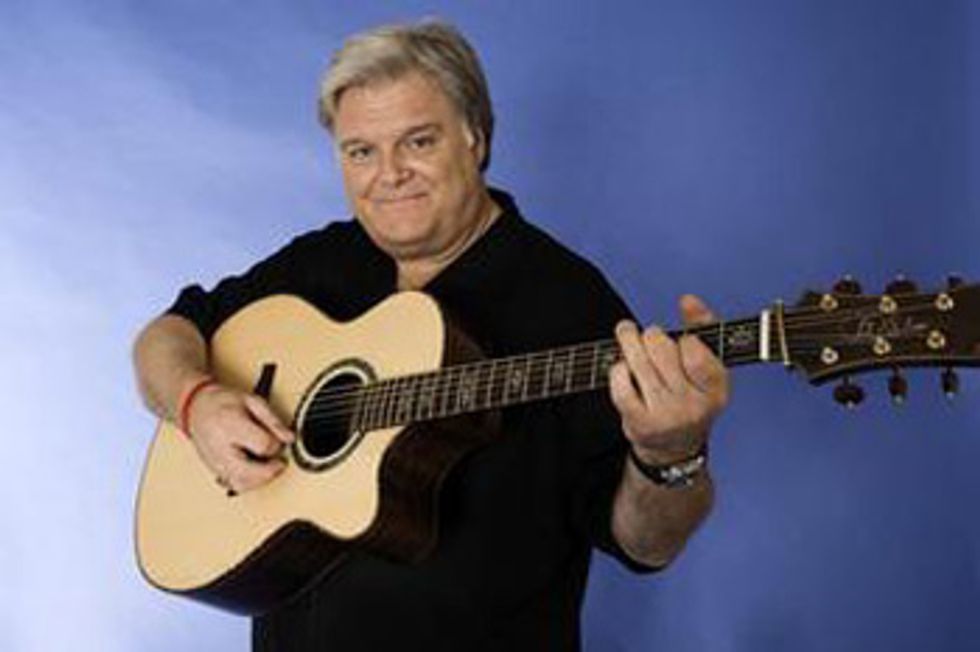 Well, I had a Telecaster-style guitar that Joe Glaser had built me, and it had a string bender in it, ‘cause I loved that string bender sound that Albert had when he played on some of my early records—like “Head Over Heels In Love With You” from the Don’t Cheat in Our Hometown record. I set down with my records and started learning Ray’s solos, like “Highway 40 Blues,” and the intro to “Don’t Cheat in Our Hometown” that Albert had played on. I learned the intros and turnarounds to about 10 or 15 songs that really had to have that electric guitar sound or we wouldn’t be able to be true to the song so much.
Well, I had a Telecaster-style guitar that Joe Glaser had built me, and it had a string bender in it, ‘cause I loved that string bender sound that Albert had when he played on some of my early records—like “Head Over Heels In Love With You” from the Don’t Cheat in Our Hometown record. I set down with my records and started learning Ray’s solos, like “Highway 40 Blues,” and the intro to “Don’t Cheat in Our Hometown” that Albert had played on. I learned the intros and turnarounds to about 10 or 15 songs that really had to have that electric guitar sound or we wouldn’t be able to be true to the song so much. Within a week I had learned these solos good enough to go out and do that two-week tour, and I tell you what, I was scared to death! Walking out there plugged in to an amp… I had some L9s at the warehouse, so going on the road, taking that Fender guitar, pluggin’ in and bein’ the electric guitar player for the band… I said “What are you doin’? This is stupid! This is suicide! Here’s fifteen-thousand people who are gonna know the difference— they’re gonna know you’re green as a gourd.” So I went out there and played “Honey Open that Door,” and I didn’t blow it! I made it! I played the solo and the crowd cheered, and I thought, “Oh my God, I made it through that... thank you God!” So when it come time to kick off “Highway 40 Blues” with the steel guitar player and all [sings intro], I made it through that. For two weeks I got to play every night, and then I did that for probably three or four years before I hired a full-time electric guitar player for the band, so I could just focus again on singin’ and playin’ the acoustic guitar… it’s really hard to play the backup fills that the guitar needed to play while I was singing. So, going from mandolin to Tele was quite a challenge but I loved it—I really did. I miss it, I miss playing the electric guitar.
But we have just released some of my old country hits from CBS/Epic, and we’re re-releasing all of them on Skaggs Family Records, so I’m probably going to end up draggin’ my ‘57 Tele out and startin’ to play it again, and I’m lookin’ forward to that, I think it’ll be fun. We’ll still be doing bluegrass... but instead of doing bluegrass as part of the country show, we’re gonna do some country as part of a bluegrass show!
Let’s talk about recording. You’ve gone from the simple, standing-around-a-micwith- four-guys-completely-live, to major productions in big studios with every kind of gear imaginable. How has that whole spectrum influenced the way you record now?
Well, I have learned a lot over many years of recording. I’ve done it both ways. I first started recording with Ralph Stanley when I was 16. We went direct to quarter-inch tape, direct to stereo. If we got a good take, then that was the cut; if we messed up, we’d do it over. But we wouldn’t labor over it—and the band was good, especially Ralph and the guys. Keith [Whitley] and I was the add-ons, the new kids, so God help us to not mess up! I guess once I got with Boone Creek, our music was changing and evolving, and we started doing more overdubs there. We were wanting more separation, so that if someone did mess something up, we could go back and fix it without destroying the integrity of the track.
I guess it was probably when I went with Emmylou Harris that I started growing as a producer and studio musician. Emmylou’s husband at the time, Brian Ahern, was a brilliant producer. I learned so much from him, watching what he did. It wasn’t that he was telling me stuff, I was just always watchin’ and trying to learn why he made this choice, why he made this decision musically. He was like a P.T. Barnum, calling it out, “You play this… you play this… if you play this together with him, it’ll create this sound, and drums you stop here and go to high-hat…” I was learning so much from him, musically and sonically, the mics he was using and that kind of thing.
But after leaving Emmylou, I came to Nashville. I had produced all this music for Sugar Hill Records in NC, a small indie label. I was sittin’ on an airplane next to a major label exec, and I played him some of my stuff ‘cause he asked to hear it, and he flipped out. He played it for the execs at Capitol in Nashville, and they loved it, but the guy in Los Angeles who had to sign off didn’t like it. So, the guy from the Nashville Capitol office made one phone call to Rick Blackburn at Epic. And so I drive down the street half a block and walk in at Epic and play the stuff for him. He said, “Who produced that?” “I did.” “It’s great. I love it.” I said, “That’s part of the deal. I want to be able to produce my own music, if that’s possible.” Here was this brand new, unproven, unheard-of artist, and so I had to make good records—I knew I had to. They had to sound good, they had to work good, they had to come in on budget and on time, so I had to grow up pretty quick.
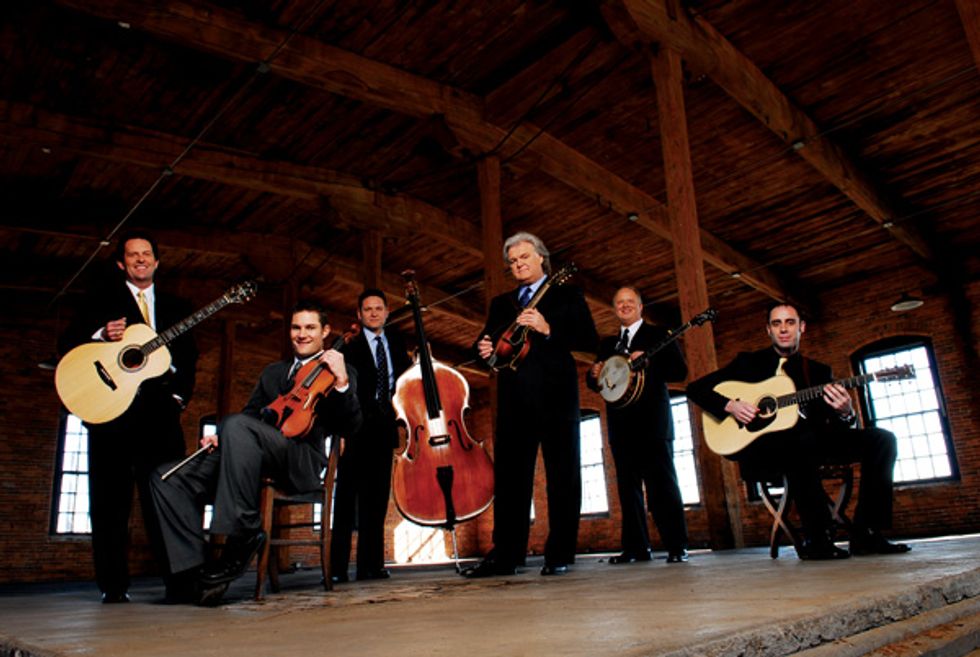
Sometimes I’ll go into a vocal booth and sing and maybe even play to where they can hear the groove that I’m hearin’, and then I’ll go back in and fix my guitar and fix my vocal again. But we try to get fiddle, mandolin, acoustic guitar and bass—and many times banjo, if we’re cutting a track that needs a banjo. In my studio, we don’t have a whole lot of booths; most the stuff is right out in one big, open room and it sounds great. We got big thick, dense foam that’s like 8 feet long and maybe 4 to 5 feet wide, and we set them on their side and we sort of build ourselves in a little den there so we have some separation and we’ll cut thataway.
You’ve recently been involved with the creation of a couple of amazing acoustic guitars, the Bourgeois Ricky Skaggs Limited Edition and the new Paul Reed Smith acoustics, the Tonare Grand and the Angelus. You’ve had a long relationship with Dana Bourgeois, but how did you get involved with PRS?
Almost four years ago now, Paul Reed Smith came to me and brought me some really rough prototypes—they were very, very prototype, but he brought them to me anyway. He said, “I’ve called around the country and I’ve asked a lot of musicians, ‘If I was gonna create a great acoustic guitar, who should I get to walk with me through this process?’ and your name kept coming up as the guy to get in touch with, so I’m just bringing these before you so you can look at ‘em.” So I looked at ‘em and saw that they were a little thinner bodywise than the Bourgeois dreadnoughts and Martins that I’d been playing—but boy, when I strummed the instrument the first time the thing just jumped out of my hands. I realized right then that they were really on to something.
I said, “We gotta find something that sounds good, plays good and looks good, and all your electric guitars play great, so you’ve got that part of it down. We just gotta make sure that part gets transferred to the necks of these acoustic guitars.” So many times, you know, you find a great-sounding acoustic guitar and the neck is just hard to play—it’s not friendly. At 55 years old, I don’t want to have to be working to play an
| RICKY'S GEARBOX Acoustic Guitars: PRS Tonare Grand Bourgeois D150 Bourgeois Ricky Skaggs Limited Edition Bourgeois OM 1931 Gibson L5 Archtop 1959 Martin D28 1942 Martin 000-21 Herringbone 1935 National Dobro Guitar Electric Guitars: 1957 Fender Telecaster Gretsch Country Gentleman Danelectro 6-String Baritone Amps: Fender Dual Professional Fender Twin Fender Princeton Lab Series L9 Effects: MXR Flanger EchoPlex Roland Space Echo |
What about the Bourgeois?
We talked about doin’ a signature model a couple years ago, and I said, “Well, let’s think about doin’ something that’s a dreadnought, like a D150, but really dressed out, beautiful to look at, wonderful to play, something that would be like a collector’s item. We don’t want to do a D45, but if you could do a Bourgeois to the nth degree, what would you want to do?” So we talked about AAA fancy Brazillian rosewood sides and back, really choice Adirondack spruce tops. And we wanted to dress the tuning keys up, so I think there’s ‘RS’ on all the tuning keys. He said, what would I think about a fossilized ivory bridge, and I said I thought it’d be beautiful. I saw an old parlor guitar years ago that had an old pickguard with some silver wire in it, and it was just gorgeous, but he told me about silver wire and how hard it is to get in there. But also, as the years go and these pickguards shrink and expand, that wire gets loose and starts to raise up, so it’s kind of hard on the player. Then we talked and decided we’d just do pearl inlay; that’ll just expand with the pickguard. I think we came up with something really pretty, and it’s not overdone, it’s not understated, and they’re great-sounding guitars. It records so well. And we just did ten of these guitars… I think we only have maybe two or three left to sell now. There’s nobody makes a better dreadnought bluegrass acoustic guitar than Dana Bourgeois. I just think his sound, the playability of these guitars, especially for bluegrass style, they’re just great guitars for that.







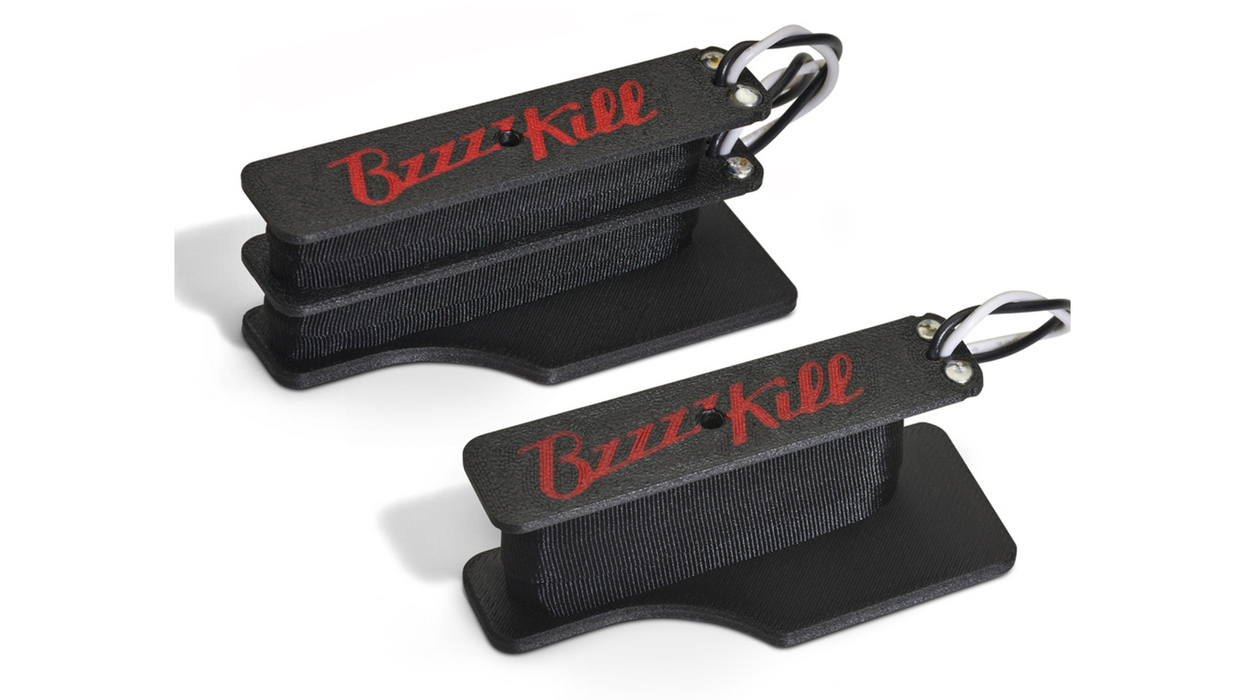





![Rig Rundown: Russian Circles’ Mike Sullivan [2025]](https://www.premierguitar.com/media-library/youtube.jpg?id=62303631&width=1245&height=700&quality=70&coordinates=0%2C0%2C0%2C0)
















![Rig Rundown: AFI [2025]](https://www.premierguitar.com/media-library/youtube.jpg?id=62064741&width=1245&height=700&quality=70&coordinates=0%2C0%2C0%2C0)




















 Zach loves his Sovtek Mig 60 head, which he plays through a cab he built himself at a pipe-organ shop in Denver. Every glue joint is lined with thin leather for maximum air tightness, and it’s stocked with Celestion G12M Greenback speakers.
Zach loves his Sovtek Mig 60 head, which he plays through a cab he built himself at a pipe-organ shop in Denver. Every glue joint is lined with thin leather for maximum air tightness, and it’s stocked with Celestion G12M Greenback speakers.






